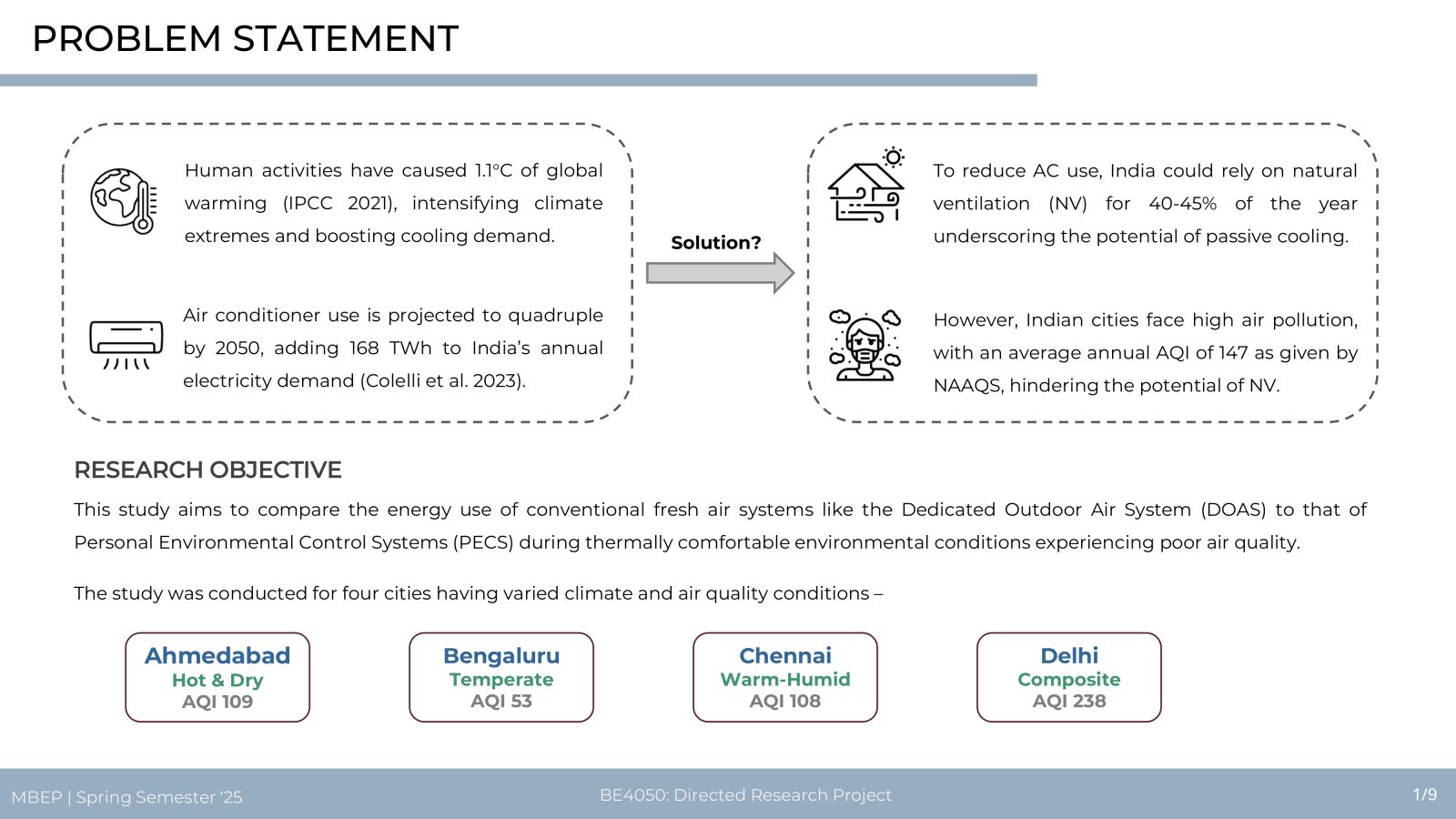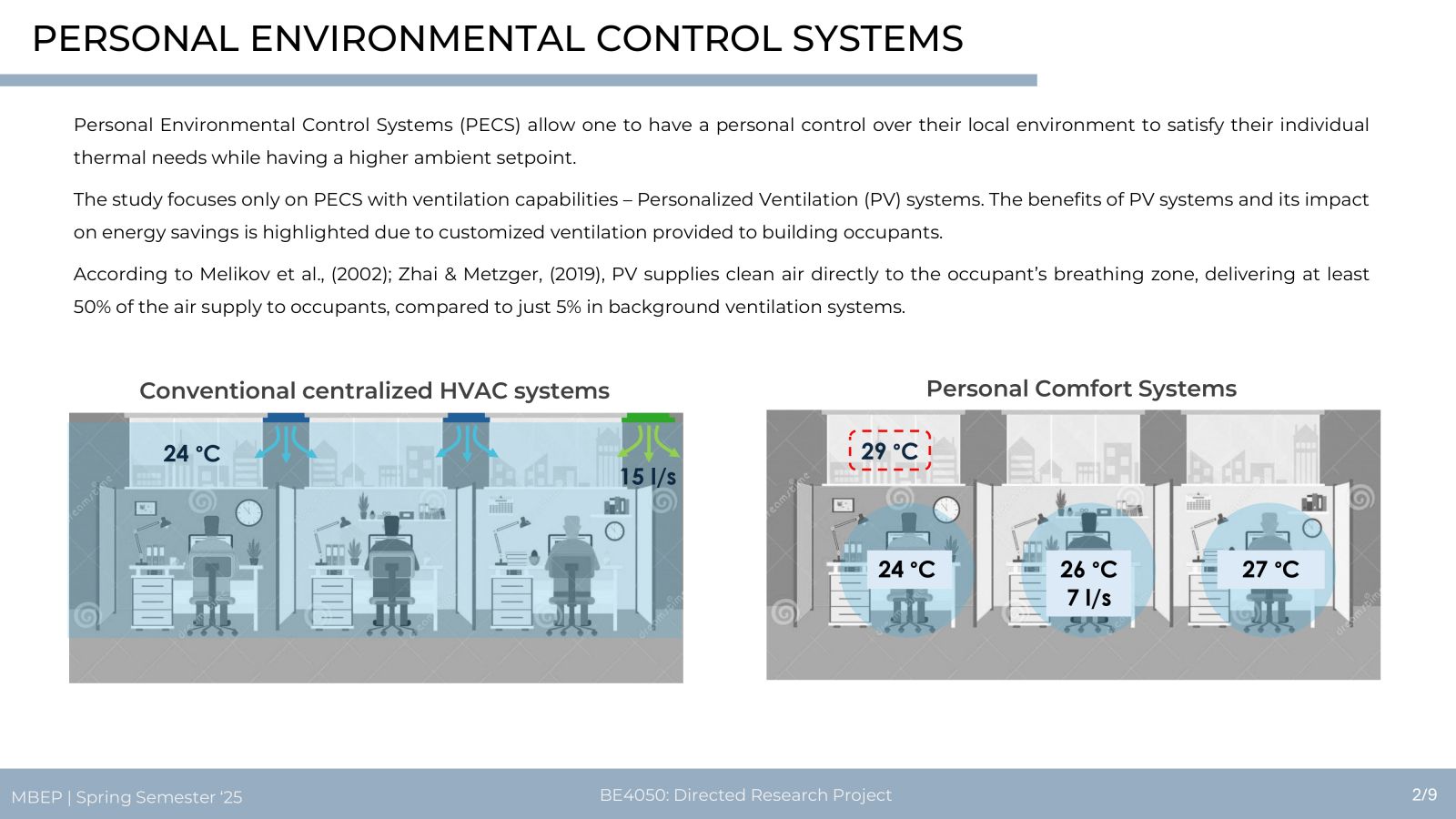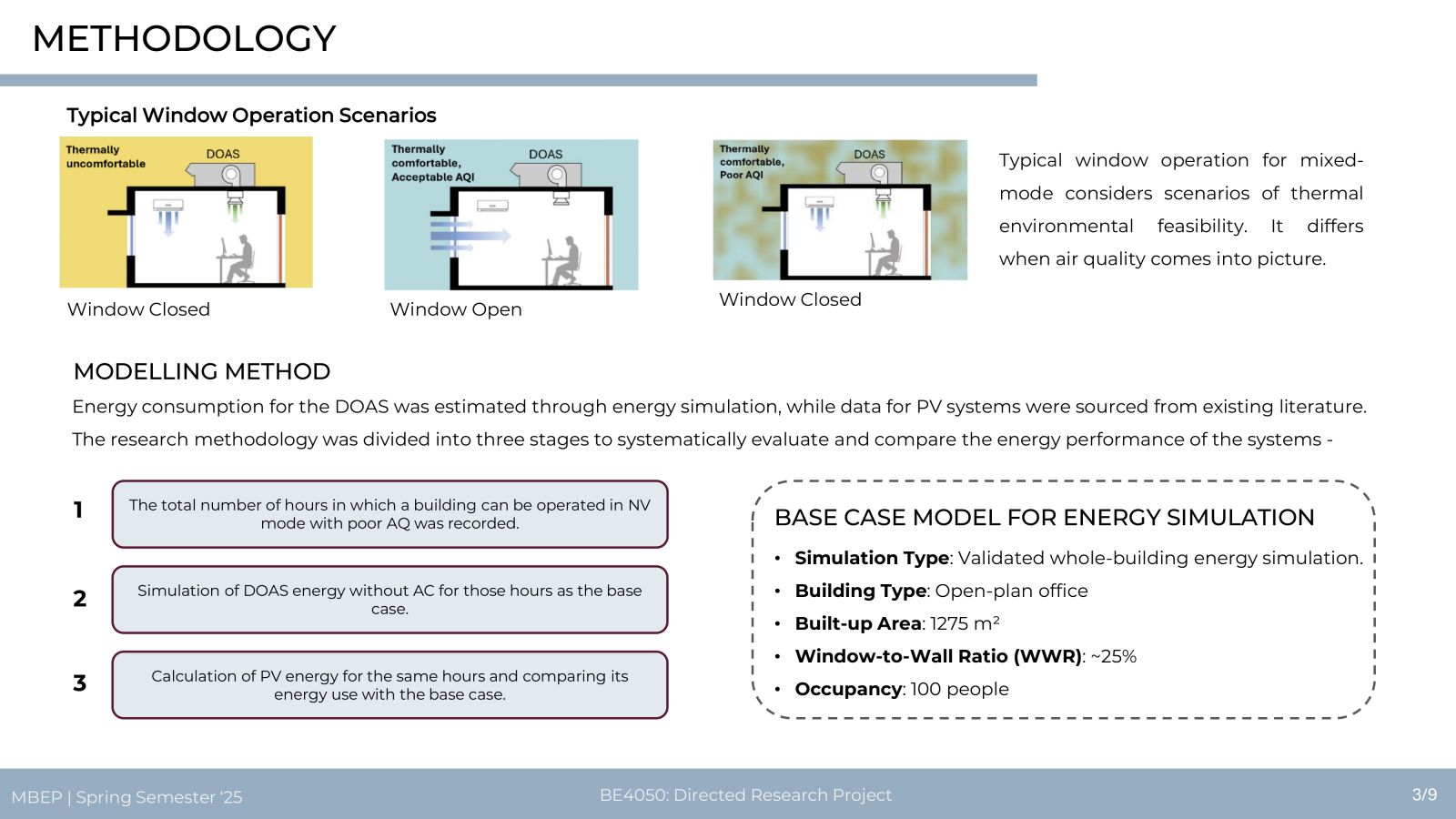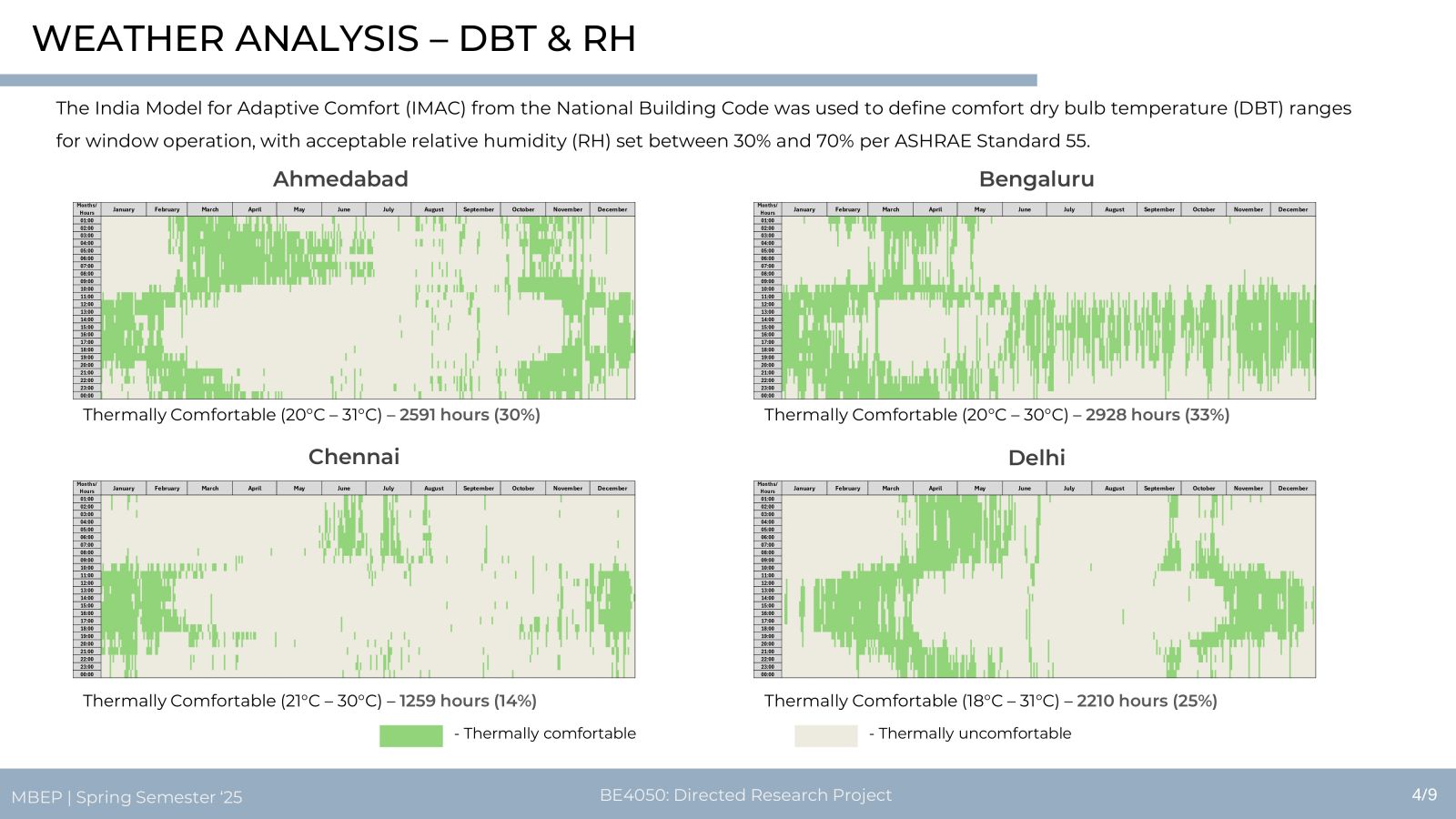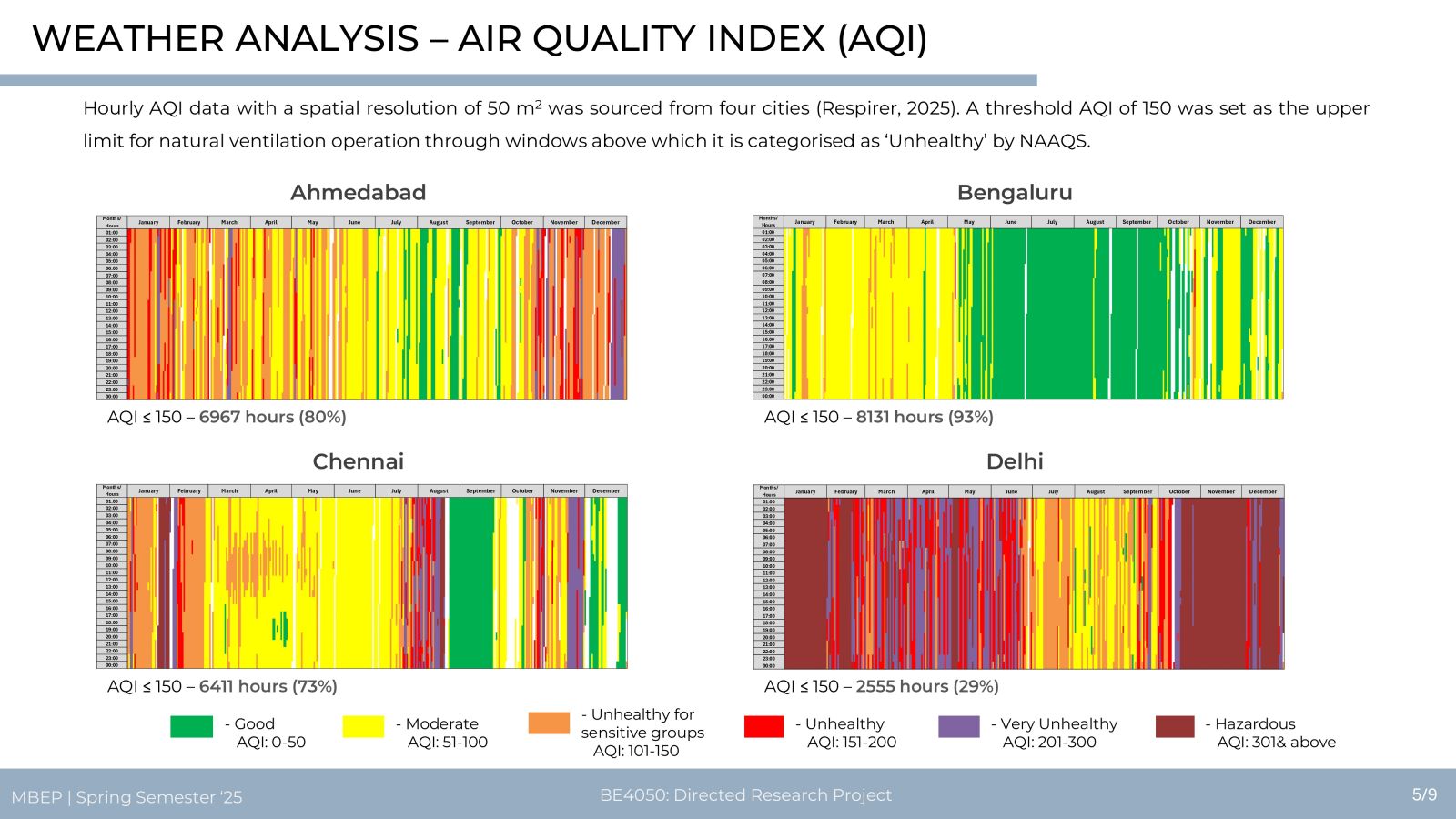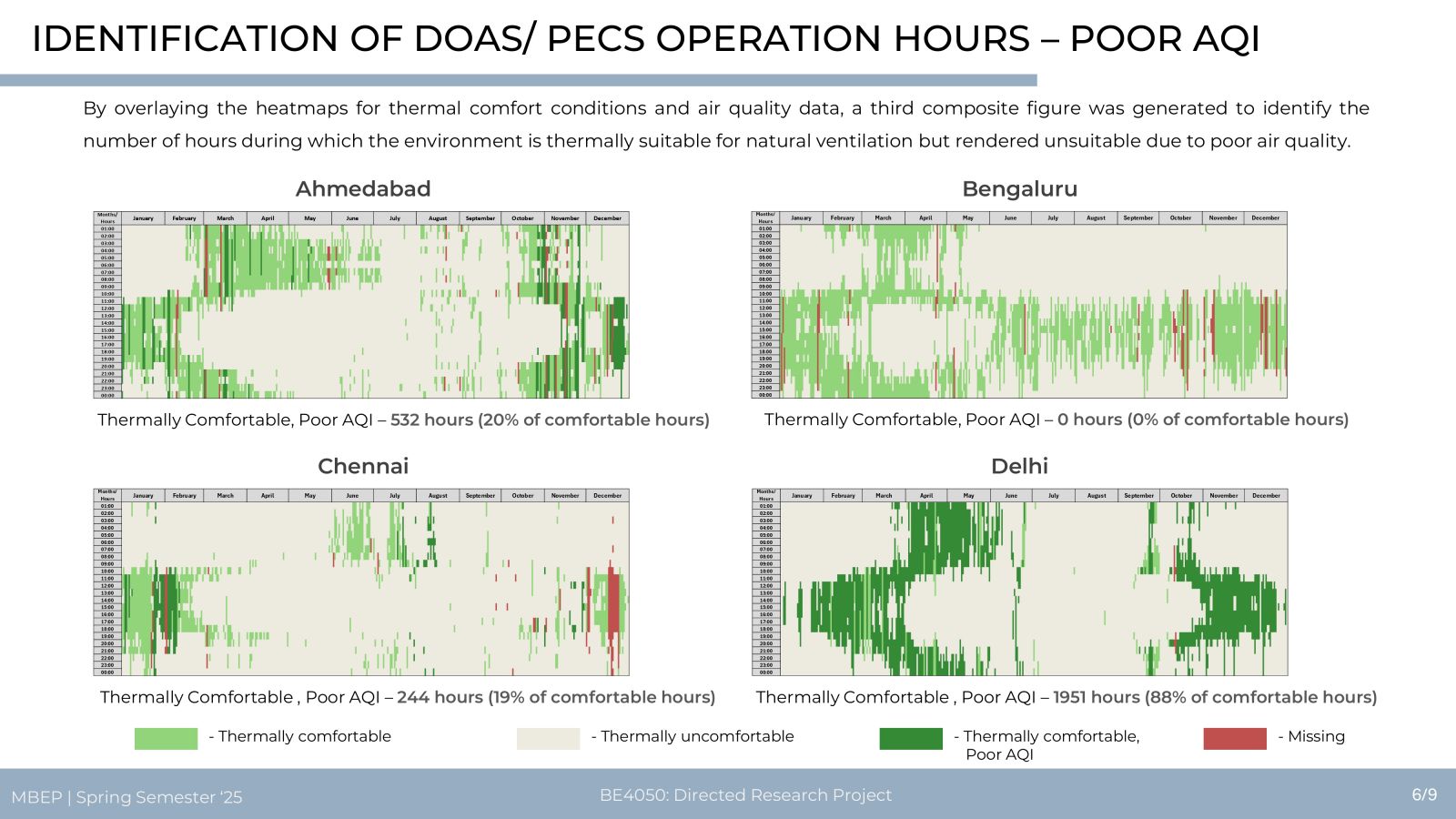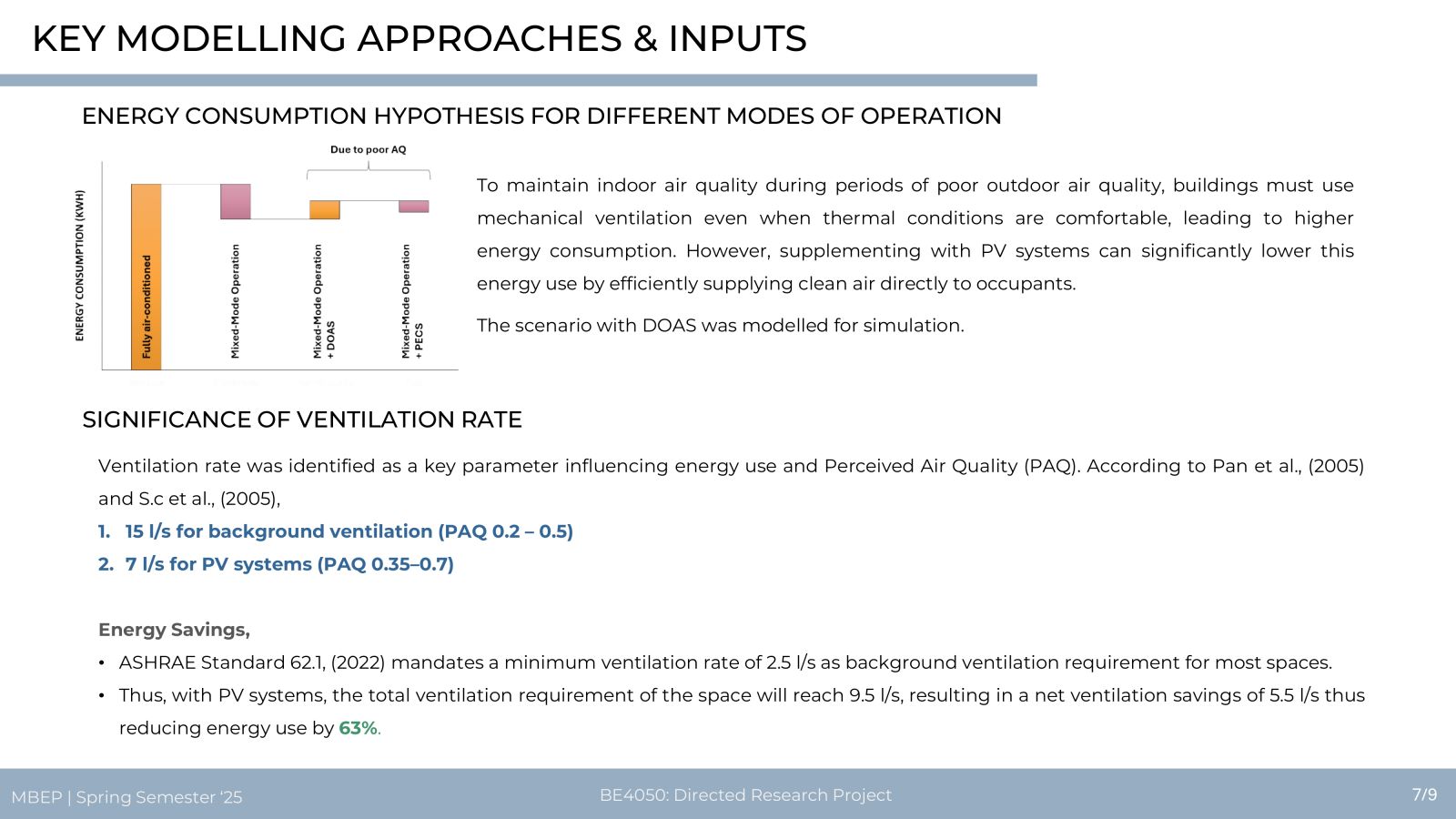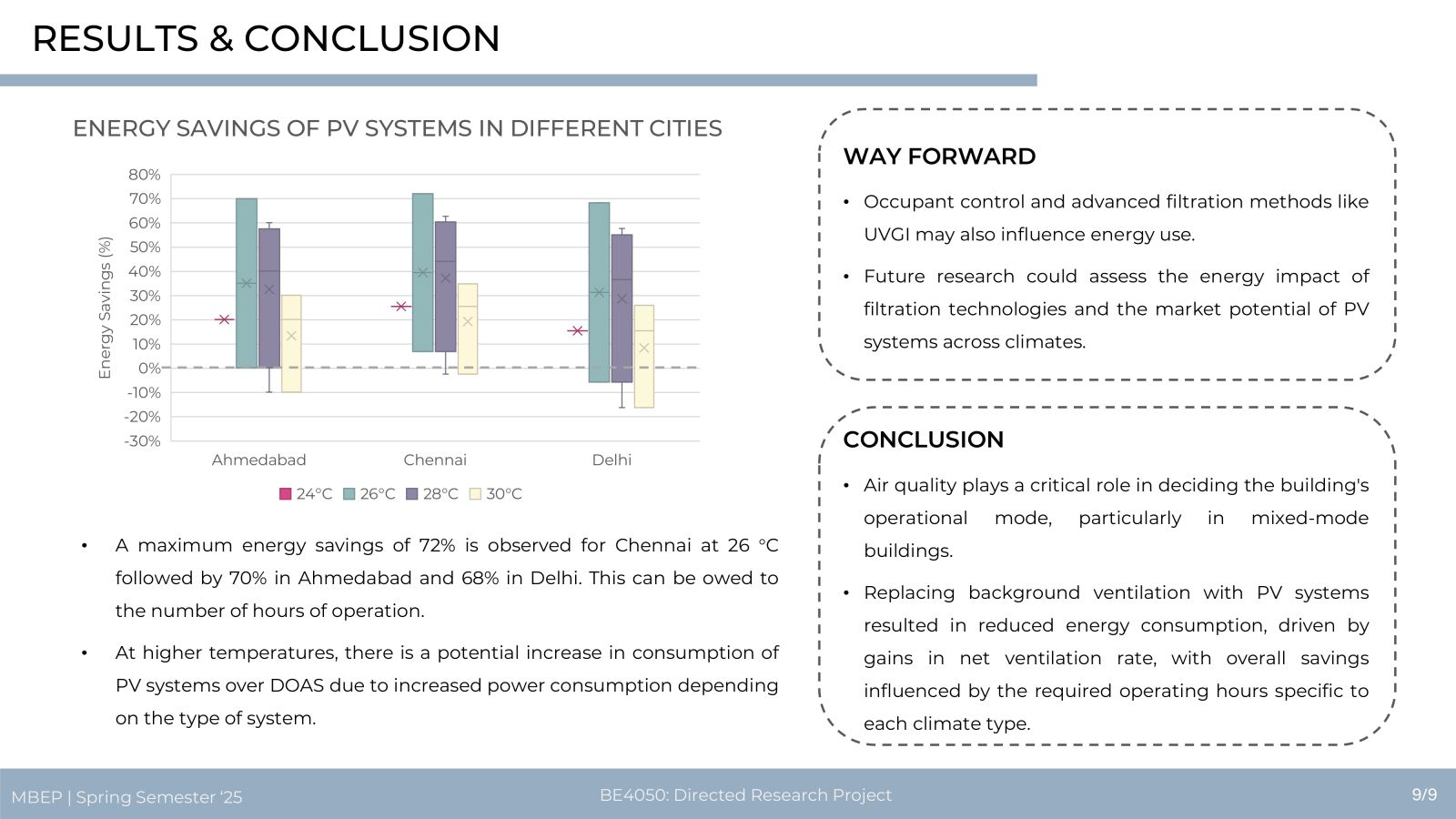Your browser is out-of-date!
For a richer surfing experience on our website, please update your browser. Update my browser now!
For a richer surfing experience on our website, please update your browser. Update my browser now!
With increasing climate variability, Indian buildings are expected to rely more heavily on mechanical ventilation and air conditioning to maintain healthy indoor environments. At the same time, cities in India face some of the highest air pollution levels with an average Air Quality Index (AQI) of 147, often making natural ventilation infeasible despite thermally favorable conditions. This study compares the energy consumption of conventional ventilation systems like Dedicated Outdoor Air Systems (DOAS) and Personalized Ventilation (PV) across four Indian cities with varying climates and air quality. A simulation-based approach using a typical office building assessed environmental conditions to determine optimal building operation modes. Results showed that PV systems, which reduce ventilation airflow by 5.5 l/s, cut energy consumption by up to 63%. At a background temperature of 26?°C, PV systems achieved maximum energy savings of 72% in Chennai, followed by 70% in Ahmedabad and 68% in Delhi, demonstrating their potential as energy-efficient alternatives in polluted environments.
